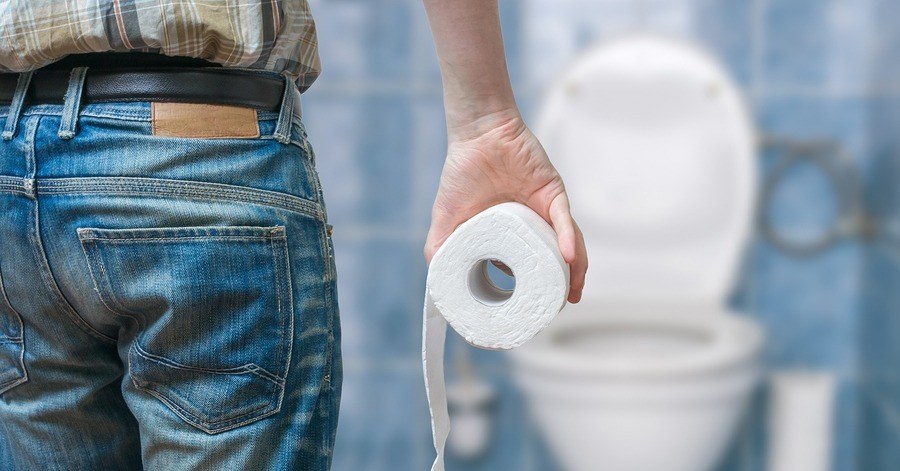Grade 3 Hemorrhoids Guide: Symptoms, Causes, Treatments & Recovery

Although grade 3 is not the most severe type of internal hemorrhoid, a grade 3 diagnosis can indicate a serious problem that requires medical treatment. In fact, your doctor may recommend that you undergo a surgical procedure to correct the problem.
What does grade 3 mean for you, and how can you find healing for your condition? I've compiled this complete guide to grade 3 hemorrhoids to help you understand the problem you are facing and give you information about how to treat it.
Symptoms
Grade 3 hemorrhoids may cause bleeding. You might notice blood on the toilet paper when you wipe after a bowel movement. There may also be blood in the toilet bowl.
The hemorrhoids may also cause discomfort. This can involve pain or itching. The rectal area may feel generally irritated. Some hemorrhoids may also cause swelling in the region.
Hemorrhoids that are classified as grade 3 prolapse, or extend out of the rectum, when you have a bowel movement. They can be pushed back into place with your hand, but they don't go back into place on their own.
Causes
Hemorrhoids occur when pressure is applied to the anal area. This causes the veins in region to swell.
This is often related to complications with bowel movements. Both ongoing diarrhea and ongoing constipation can lead to hemorrhoids. Improving the diet with proper water and fiber intake in an attempt to soften bowel movements can reduce the strain of passing stool.
Excess weight can also put undue pressure on the rectum. This might be a short-term situation, such as pregnancy, or a long-term problem, like obesity.
Hemorrhoids may get worse over time, moving from a lesser grade to a higher one. Grade 3 should be treated before developing into grade 4.
Differences from Other Grades
Hemorrhoids are classified based on their degree of prolapse.
- Grade 1: The least severe internal hemorrhoids, grade 1 hemorrhoids are not prolapsed. Rather, they are entirely contained inside the rectum.
- Grade 2: These hemorrhoids do extend out of the anus during a bowel movement, but they return to their normal position on their own.
- Grade 3: These hemorrhoids can be manually shifted back into place.
- Grade 4: This grade refers to hemorrhoids that are permanently prolapsed and cannot be put back into position. They extend out of the anal opening all of the time.
Treatment Options
Grade 3 hemorrhoid treatment is usually surgical. Today's medical technology allows for minimally invasive surgical treatment of these serious hemorrhoids.
Hemorrhoid Banding
Although banding is more often used for less significant hemorrhoids, i.e. level 1 and 2 hemorrhoids, some grade 3 hemorrhoids can be treated through a banding procedure, called rubber band ligation. In this procedure, a small rubber band is slipped over the hemorrhoid. It restricts blood flow to the tissue, so the hemorrhoid withers and falls off.
Learn more about banding in the video "What is Rubber Band Ligation and How Is It Done? - Dr. Nagaraj B. Puttaswamy."
Laser Removal
Grade 3 and 4 hemorrhoid treatments can also be completed with a laser procedure. A small laser fiber is inserted directly into the hemorrhoid. The light energy from the laser works to close off the blood supply to the tissue. This coagulation causes the hemorrhoid to shrink up and disappear.
Recovery Time
Traditional hemorrhoid surgery has necessitated significant recovery time, much of it painful. Today's newer treatments are not only quite effective, but they also help patients return to normal activities sooner.
With rubber band ligation, the majority of postoperative pain improves within just a couple days after surgery. Patients may experience bleeding a week or two after surgery. This occurs when the hemorrhoidal tissue falls off.
Laser treatment may involve even less postoperative discomfort. Many patients do not require medical pain management after the procedure. Hemorrhoids that previously bled should stop doing so within a few days.
Patients may want to take a laxative to ease discomfort during the recovery period. After treatment, it is a good idea to introduce lifestyle changes that may help ward off a recurrence of the condition. For example, eat a well-balanced diet that is high in fiber, stay well hydrated, avoid prolonged sitting and get regular exercise.
Hemorrhoids that are classified as grade 3 are prolapsed and return to their proper position inside the rectum only when pushed back into place. Grade 4 hemorrhoids remain outside the anus.
- Hemorrhoids of these grades often require surgical treatment. If you are experiencing symptoms like anal itching, pain or bleeding, consult your doctor.
- Rubber band ligation and laser hemorrhoidectomy are possible treatment options for hemorrhoids of this grade.
If you have questions about hemorrhoids, please leave a comment.
